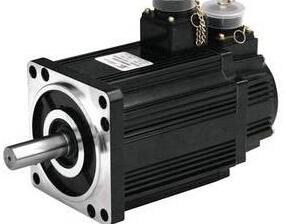
Servo motor refers to the engine that controls the operation of mechanical components in the servo system. It is also a device that assists the indirect speed change of the motor. Its working principle is a bit complicated compared to other motors, and it is difficult for ordinary people to master it, unless they are professionals. The following is the working principle of the servo motor.
The servo motor can control the speed and position accuracy very accurately, and can convert the voltage signal into torque and rotational speed to drive the control object. The servo rotor speed is controlled by the input signal and can react quickly. It is used as an actuator in the automatic control system and has the characteristics of small electromechanical time constant, high linearity, starting voltage, etc. It can convert the received electrical signal Converted into angular displacement or angular velocity output on the motor shaft. They are divided into two categories: DC and AC servo motors. Their main feature is that there is no rotation when the signal voltage is zero, and the rotational speed decreases at a constant speed as the torque increases.
working principle:
1. The servo system is an automatic control system that enables the output of the object's position, orientation, status, etc., and the controlled quantity to follow arbitrary changes in the input target (or given value). The servo mainly relies on pulses for positioning. Basically, it can be understood this way. When the servo motor receives a pulse, it will rotate the angle corresponding to the pulse, and then complete the displacement. Since the servo itself has the function of sending pulses, every time the servo rotates A viewpoint will send out a corresponding number of pulses. In this way, the pulses received by the servo form a response, or a closed loop. In this way, the system will know how many pulses are sent to the servo motor, and how many pulses are received back at the same time. In this way , you can control the rolling of the motor very accurately, and then complete accurate positioning, which can reach 0.001mm. DC servo is divided into brush and brushless motors. Brush motors have low cost, simple structure, large starting torque, wide speed regulation range, simple control, and require protection, but maintenance is inconvenient (carbon brush replacement), electromagnetic interference occurs, and there are environmental requirements. Therefore it can be used in cost-sensitive general industrial and civil applications.
Brushless motors are small in size, light in weight, large in output, fast in response, high in speed, small in inertia, smooth in rolling and stable in torque. The control is simple and intelligent, and its electronic commutation method is flexible and can be square wave commutation or sine wave commutation. The motor is free of protection, has high power, low operating temperature, very small electromagnetic radiation, long life, and can be used in various environments.
2. AC servo motors are also brushless motors and are divided into synchronous and asynchronous motors. Nowadays, synchronous motors are generally used in motion control. They have a large power scale and can achieve high power. Large inertia, low rolling speed, and decreases rapidly as power increases. Therefore, it is suitable for low-speed and smooth operation.
3. The rotor inside the servo motor is a permanent magnet. The U/V/W three-phase electricity controlled by the driver forms an electromagnetic field. The rotor rolls under the effect of this magnetic field. At the same time, the motor's own encoder responds to the driver according to the response value. Compare with the target value to adjust the angle of rotation of the rotor. The accuracy of the servo motor depends on the accuracy (number of lines) of the encoder.
The functional difference between AC servo motor and brushless DC servo: AC servo is better because it is controlled by sine wave and has small torque pulsation. DC servo is a trapezoidal wave. But DC servo is relatively simple and cheap.



















